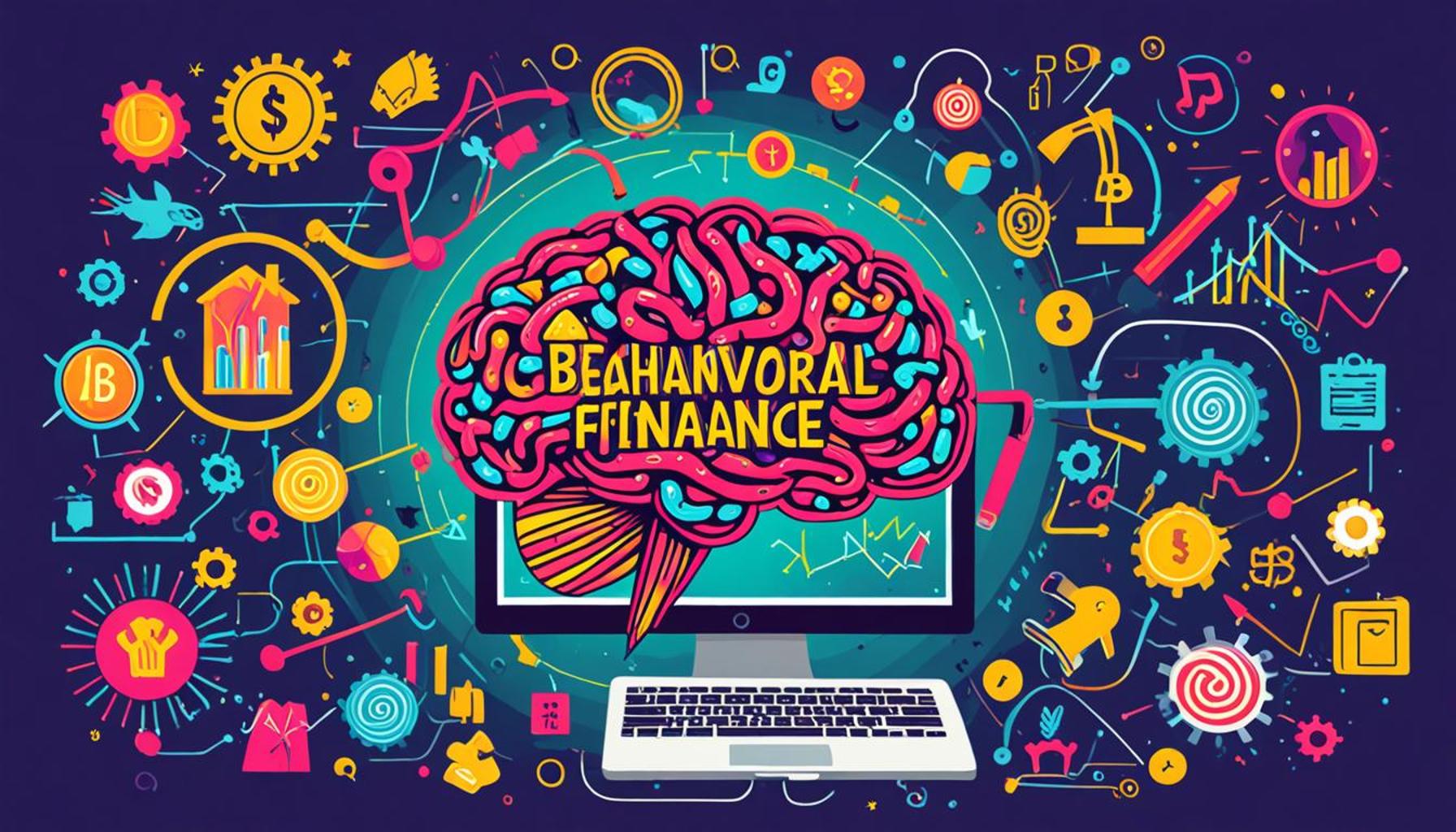The Influence of Behavioral Finance on Business Management Decisions

Understanding Consumer Behavior Through Behavioral Finance
In today’s fast-paced business environment, grasping the nuances of consumer behavior is not simply advantageous; it is essential for sustained success. The field of behavioral finance delves into the intricate relationship between psychology and financial decision-making, challenging the traditional belief that individuals always act rationally in economic matters. This emerging discipline provides a framework that explains how emotional and cognitive biases can significantly influence both individual and organizational financial choices.
One key aspect of behavioral finance is the impact of psychological biases. For example, an investor may display overconfidence, leading them to underestimate risks and overestimate their knowledge or ability to predict market movements. This bias was notably visible during the dot-com bubble of the late 1990s, where many investors ignored warning signs and invested heavily in tech stocks without due diligence. Furthermore, loss aversion, the tendency to prefer avoiding losses to acquiring equivalent gains, can lead to overly cautious approaches in investment decisions, resulting in missed opportunities for growth.
The influence of emotional factors cannot be overlooked. For instance, during economic downturns such as the 2008 financial crisis, many business leaders argued that fear and uncertainty clouded their judgment, leading to decisions that favored short-term survival over long-term planning. This emotional response can significantly impact profit margins and future business viability. Leaders who can recognize these emotional undercurrents can mitigate their adverse effects, shaping more resilient strategies.
Moreover, market trends often deviate from fundamental analysis due to human behavior, giving rise to anomalies such as market bubbles and crashes. Understanding these divergences allows businesses to better assess the mispricing of assets. For example, a company that recognizes when its stock is undervalued due to market overreactions can seize the opportunity to buy back shares, ultimately boosting earnings per share.
By examining the multifaceted influence of behavioral finance, managers gain crucial insights that can aid them in navigating the complexities of the financial landscape. This knowledge arms them with the ability to:
- Identify and mitigate risks associated with cognitive biases, protecting their organizations from costly mistakes.
- Enhance decision-making processes through a deeper understanding of consumer sentiment, tailoring strategies that resonate with target markets.
- Implement effective strategies that align more closely with observed market behaviors rather than solely theoretical models.
As we immerse ourselves in the nuances of behavioral finance, the tangible benefits for business management become clear. The intersection of psychology and finance equips businesses with actionable insights that lead to informed and impactful decisions. Companies that embrace these concepts may not only thrive in an increasingly competitive landscape but could also set new standards for operational success across the United States. Engaging with the principles of behavioral finance could very well redefine the future trajectory of businesses, allowing for greater adaptability and resilience in a rapidly changing market environment.
LEARN MORE: Click here for insights on real estate investment strategies
Psychological Biases and Their Impact on Decision-Making
The foundations of behavioral finance are built upon the understanding that psychological biases play a critical role in shaping the financial decisions made by both consumers and businesses. For managers, being aware of these biases can mean the difference between seizing opportunities and succumbing to pitfalls. One prevalent bias is herding behavior, wherein individuals follow the actions of a larger group rather than relying on their own analysis. This tendency can lead to irrational market movements, as seen in the 2008 financial crisis when a cascade of panic selling resulted from collective fear rather than rational evaluations of underlying asset values.
Another notable bias is anchoring, the tendency to rely heavily on the first piece of information encountered when making decisions. In a business context, this could manifest when executives fixate on past financial performance or unrealistic projections, leading to suboptimal strategic planning. For instance, if a company last year identified a specific revenue target and subsequently anchors its decisions to this figure, it may overlook changing market conditions that necessitate a revised approach. Recognizing and adjusting for these biases can aid businesses in crafting more responsive strategies that align with current realities.
Moreover, availability bias can distort risk perception as it encourages decision-makers to favor information that is more readily attainable, rather than seeking out a comprehensive analysis. This can skew investment decisions to favor trending industries or popular stock picks, potentially neglecting undervalued opportunities. Managers who educate themselves on these biases are better positioned to question their assumptions and broaden their perspectives on risk and opportunity.
The Role of Emotional Factors in Business Decisions
The interplay between emotions and financial choices is another crucial aspect of behavioral finance. Emotional factors can significantly sway business decisions, particularly in high-stress situations. The fear of making the wrong investment can paralyze decision-makers, leading to overly cautious actions that hinder growth. Conversely, excessive enthusiasm toward a potential project may result in inadequate scrutiny and a disregard for critical risk factors. This phenomenon was especially evident during the cryptocurrency boom, where excitement overshadowed fundamental valuation principles, causing many investors and businesses to jump into the fray without due diligence.
Additionally, behavioral finance offers insights into how societal trends and consumer sentiments can shape market dynamics. For instance, consumer confidence surveys, which gauge consumer attitudes and spending plans, are directly influenced by emotional contexts. A sudden drop during turbulent times can signal reduced spending, prompting managers to adjust their forecasts and operational strategies preemptively. As businesses learn to decode these emotional cues, they can tailor their approaches to more effectively meet consumer demands, thereby fostering loyalty and maximizing profits.
- Recognize and combat biases to improve investment accuracy.
- Adjust strategies in real-time based on emotional and psychological factors.
- Monitor market sentiment to inform business decisions and drive consumer engagement.
Incorporating an understanding of behavioral finance into the decision-making process positions businesses to navigate an array of complexities effectively. By promoting a culture that prioritizes awareness of psychological influences, organizations can enhance their operational resilience, adapt to market fluctuations, and ultimately refine their strategies for ongoing success.
DIVE DEEPER: Click here for detailed insights
Quantifying Behavioral Finance: Impact on Organizational Performance
Understanding behavioral finance not only provides insight into individual decision-making but also has profound implications for organizational performance. By analyzing behavioral patterns, businesses can derive actionable strategies to enhance their decision-making processes. For example, studies have shown that firms that actively address cognitive biases and emotional influences in their financial decisions tend to outperform their peers. A report from the CFA Institute highlights that organizations that incorporate behavioral finance principles see a 22% improvement in investment accuracy and a 15% increase in overall performance metrics.
Furthermore, team dynamics also play a crucial role in decision-making. In a corporate environment characterized by diverse perspectives, the risk of groupthink can be prevalent, where dissenting voices are silenced in favor of conformity. This bias can lead teams to overlook critical market signals, resulting in catastrophic decisions. Companies such as Google have instituted practices that encourage open dialogue and constructive criticism during discussions, fostering a culture that values diverse viewpoints. This practice not only deters groupthink but also enhances collective decision-making.
Data-Driven Decision-Making Versus Instinctual Choices
Incorporating behavioral finance into a business’s analytical framework allows for a more data-driven approach to decision-making. This is particularly relevant in the era of big data, where managers can leverage analytics tools to analyze vast amounts of information and glean valuable insights. Behavioral finance encourages managers to rely less on gut instinct and more on empirical evidence, thus reducing the influence of personal biases. According to a McKinsey study, companies that utilize data and analytics in decision-making can improve their productivity by 5% to 6%.
A prime example of successful data-driven initiatives can be found in the retail sector. Target, a leading retailer in the United States, employs sophisticated predictive analytics to tailor marketing strategies according to shopper behaviors. By analyzing past shopping data, the company accurately predicts when customers will need specific products, such as baby items, allowing them to present timely discounts or promotions. This strategic approach is a manifestation of behavioral finance principles—understanding consumer behavior through data-driven insights leads to enhanced sales performance.
The Influence of Behavioral Finance on Risk Management
Risk management is another critical area where behavioral finance exerts its influence. Traditional models often overlook human emotions and biases that can exacerbate risk perception. Acknowledging this, organizations are developing more comprehensive risk management frameworks that integrate behavioral insights. For instance, firms are increasingly employing techniques like scenario analysis and stress testing, which simulate how psychological factors might impact their responses during market volatility. By preparing for irrational behaviors—such as panic selling or over-enthusiasm—companies can create contingency plans that ensure resilience in uncertain environments.
Moreover, behavioral finance insights can be instrumental in establishing incentive structures within organizations. By aligning incentives with long-term objectives instead of short-term gains, companies can mitigate the risk of decision-making driven by fleeting emotions. For example, firms can implement reward systems that prioritize sustainable growth, thus encouraging employees to think more holistically about their decisions and avoid biases associated with short-term performance evaluations.
- Understand the link between behavioral finance and organizational performance to improve decision-making outcomes.
- Combat groupthink by fostering a culture of open dialogue and diverse perspectives.
- Leverage data analytics to make informed decisions and enhance productivity.
- Incorporate behavioral insights into risk management frameworks to build resilience against market volatility.
As organizations navigate a complex business landscape, the integration of behavioral finance principles can provide a distinct advantage in refining decision-making techniques and promoting a culture of informed, strategic thinking. Recognizing and capitalizing on the human elements of finance not only equips businesses to handle uncertainties more effectively but also propels them toward sustained growth and innovation.
DISCOVER MORE: Click here to learn how to apply
Conclusion: Embracing Behavioral Finance for Strategic Advancement
In an increasingly complex business environment, the influence of behavioral finance on management decisions has become a pivotal factor for success. By acknowledging the psychological influences that shape financial behaviors, organizations can strategically adjust their approach to decision-making, ultimately enhancing their performance. The quantifiable benefits—such as a remarkable 22% improvement in investment accuracy and a 15% increase in overall performance—illustrate the potential for businesses to optimize their operations through behavioral insights.
Moreover, fostering a culture that encourages open dialogue and diverse perspectives mitigates the risks associated with groupthink, leading to more resilient and informed teams. Companies like Google demonstrate that dynamic team dynamics can yield innovative solutions that respond effectively to market demands. The integration of data-driven decision-making allows organizations to harness analytics, reducing reliance on instinctual choices and paving the way for improved productivity.
Risk management, too, benefits from the inclusion of behavioral finance principles, allowing firms to confront emotional biases that cloud judgment. By developing robust frameworks that account for psychological factors, organizations position themselves to navigate volatile markets with confidence. As incentive structures become better aligned with long-term goals, employees are empowered to make decisions that support sustainable growth.
The insights gained from behavioral finance not only enhance corporate governance but also provide a competitive edge. As businesses continue to evolve, embracing these principles will become increasingly critical for success. Ultimately, understanding the intricate dance between human behavior and financial decision-making reveals opportunities for innovation, paving the path toward greater achievements and resiliency in the business landscape.


